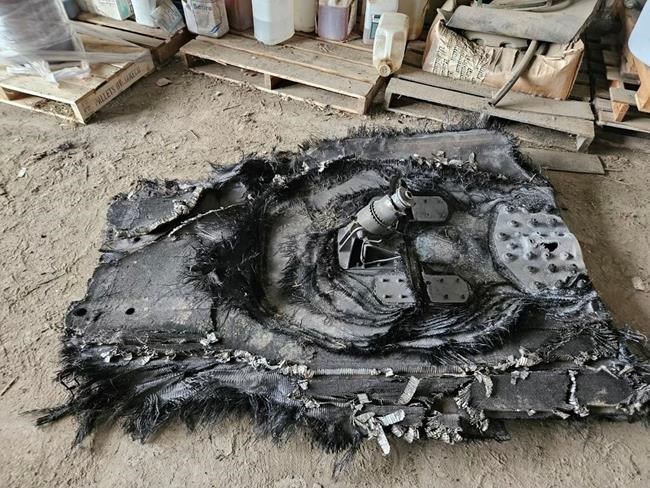Barry Sawchuk doesn’t usually concern himself with space or the final frontier.
The 66-year-old Saskatchewan farmer is much more focused on seeding.
But when he found a giant piece of debris in his fields, Sawchuk said he was shocked to learn it was likely part of a rocket.
“Not every day you go out in your field and find space junk,” Sawchuk said with a laugh in an interview from the front seat of his tractor.
Sawchuk, who farms with his three sons near Ituna, northeast of Regina, was checking out the moisture in his fields at the end of April when he spotted the item.
As he got closer, he became confused.
It looked like a burned-up piece of carbon fibre with aluminum honeycombed in between, he said. There also appeared to be a hydraulic cylinder in the debris.
It didn’t look like anything his family has ever come across on their property before.
“We knew it came from the sky, because it couldn't get there by itself,” Sawchuk said.
He said one of his sons did some research and figured it must be space debris.
The family thought it was a fun conversation starter. They did an interview with a local newspaper about the find and its possible connections to infinity and beyond.
Photos of the discovery made their way to Samantha Lawler, an associate professor of astronomy at the University of Regina.
“That's definitely space junk,” Lawler said.
Lawler sent the photos and information about where it was found to her colleague Jonathan McDowell, an astrophysicist at Harvard who tracks space launches.
Looking at data, he determined that the farmer’s find was likely linked to a SpaceX Dragon spacecraft that had returned to Earth in February with four passengers from the International Space Station.
McDowell posted on social media that the re-entry trajectory for the trunk section of the spacecraft passed within a few kilometres of where the large object was found in the field.
SpaceX did not respond to a request for comment.
The Transportation and Safety Board of Canada confirmed there were no reports of aircraft that could explain the object.
Lawler said the SpaceX Dragon is a capsule used to send people to the space station. Its trunk, an unpressurized cargo space, is attached to the capsule and provides power during the flight and while it's on the station. The trunk is ejected before the ship enters the atmosphere, where it’s expected to burn up.
But it doesn’t always.
Chunks of debris were found on farmland in Australia in 2022. The Australian Space Agency confirmed at the time that it was from a SpaceX mission.
Objects suspected to be similar space debris were also found on a farm in Washington State the year before.
Lawler said she believes more junk will land around the world as private companies bolster business in space. Every single rocket, whether transporting people or satellites, has different materials that are left in orbit.
SpaceX alone has a constellation of more than 5,000 satellites.
Lawler said tracking junk in space is haphazard. She’s been researching the dramatic increase in satellites and its effect on astronomy and atmospheric chemistry.
“I've been yelling about this for five years, and now a piece of junk fell an hour away from my house,” Lawler said.
“That's crazy. It's literally hitting close to home."
Back on Sawchuk’s farm, not much has changed. The farmer’s eyes aren’t wandering to the skies any more than they did before.
"We grow grain,” he said. “That's what we do.”
This report by The Canadian Press was first published May 14, 2024.
Kelly Geraldine Malone, The Canadian Press

